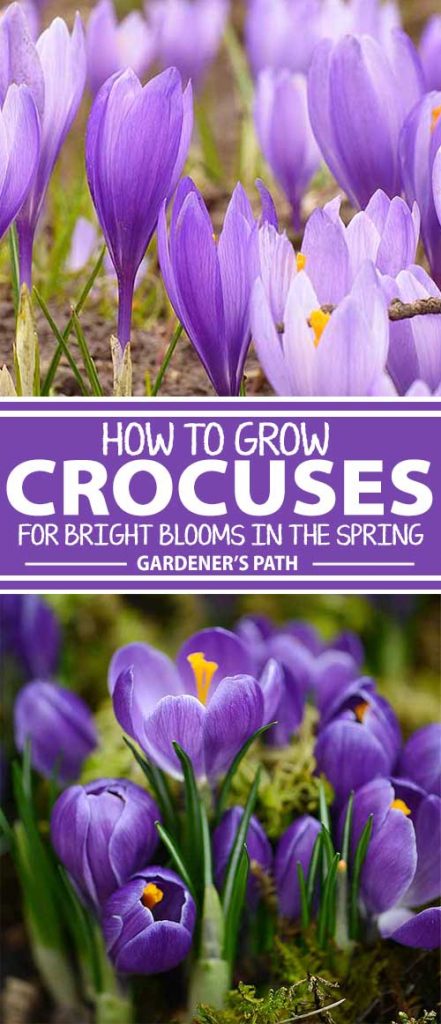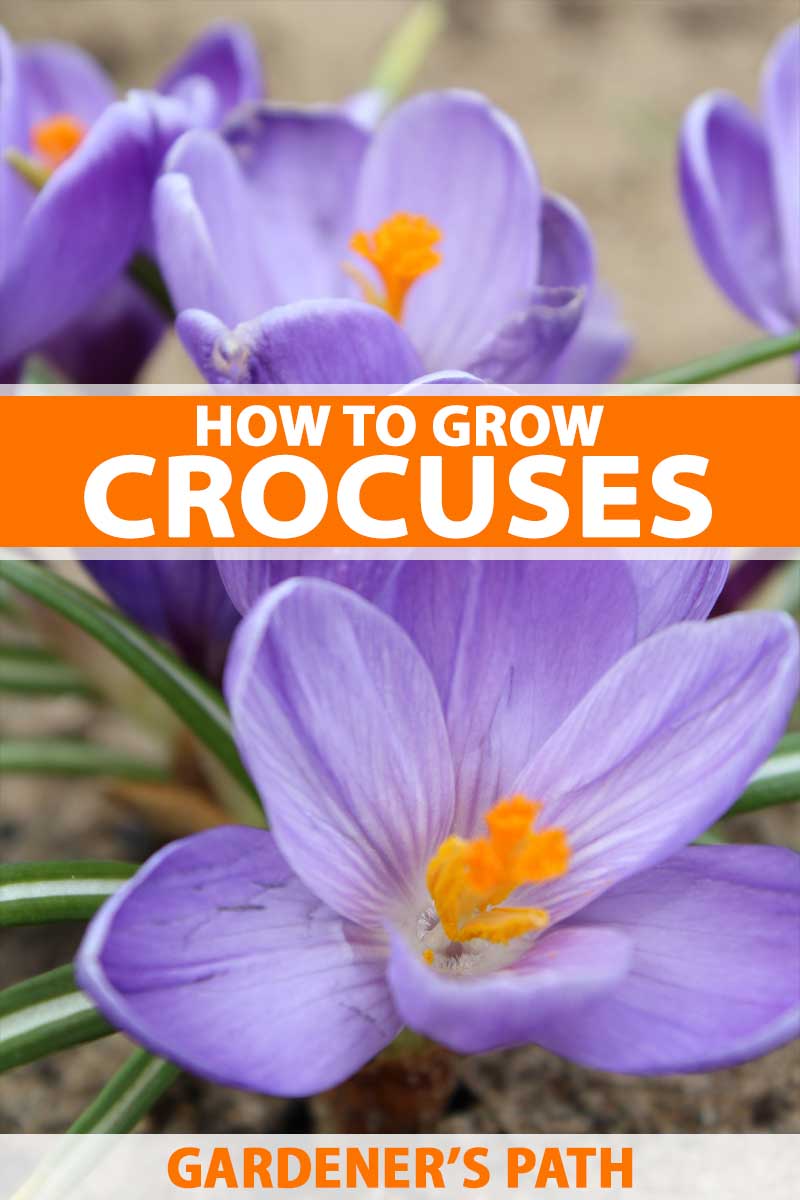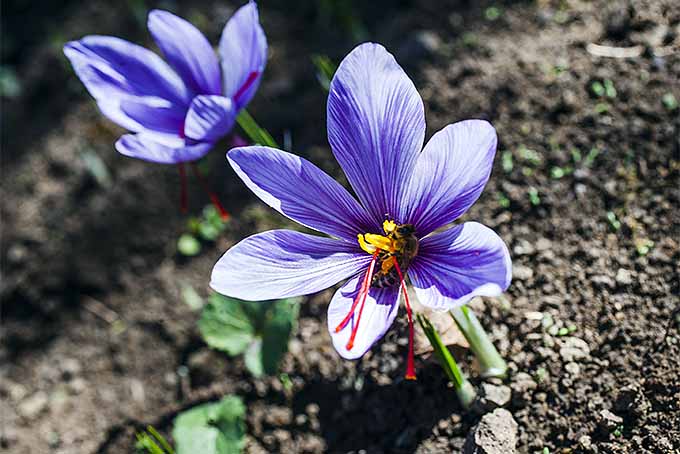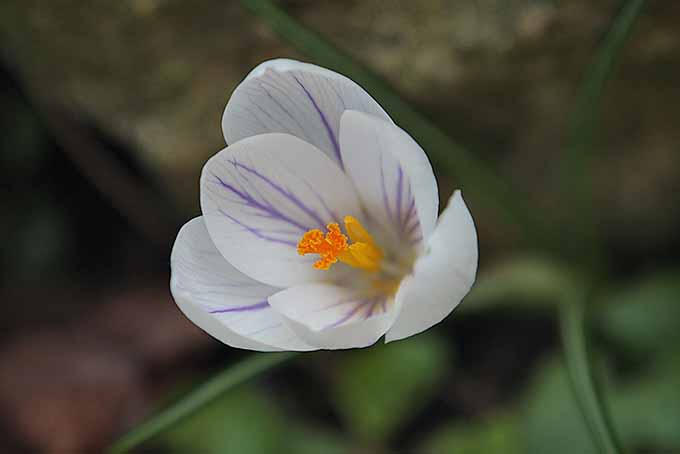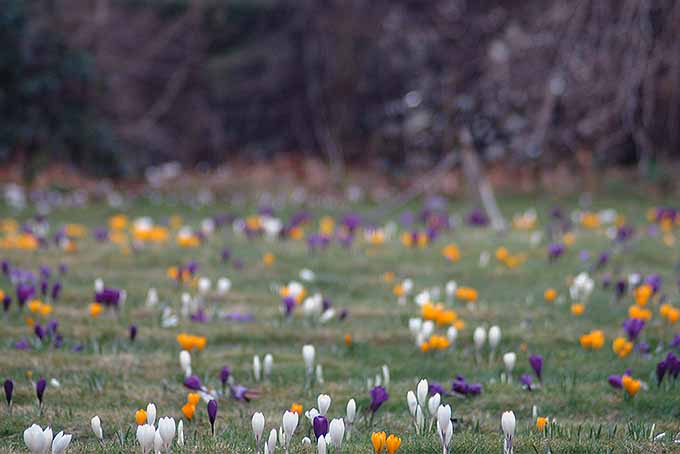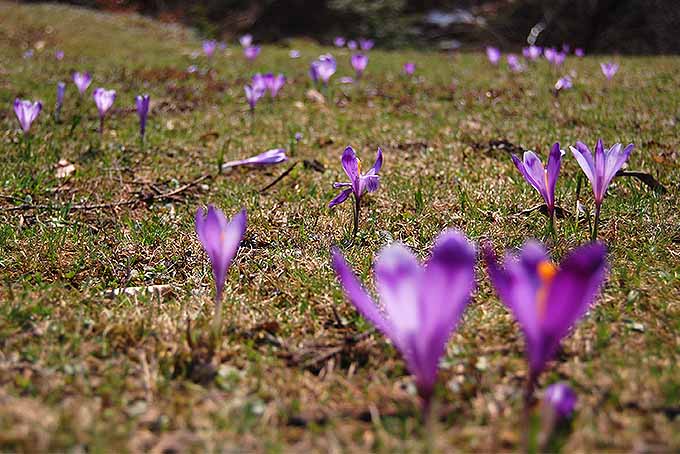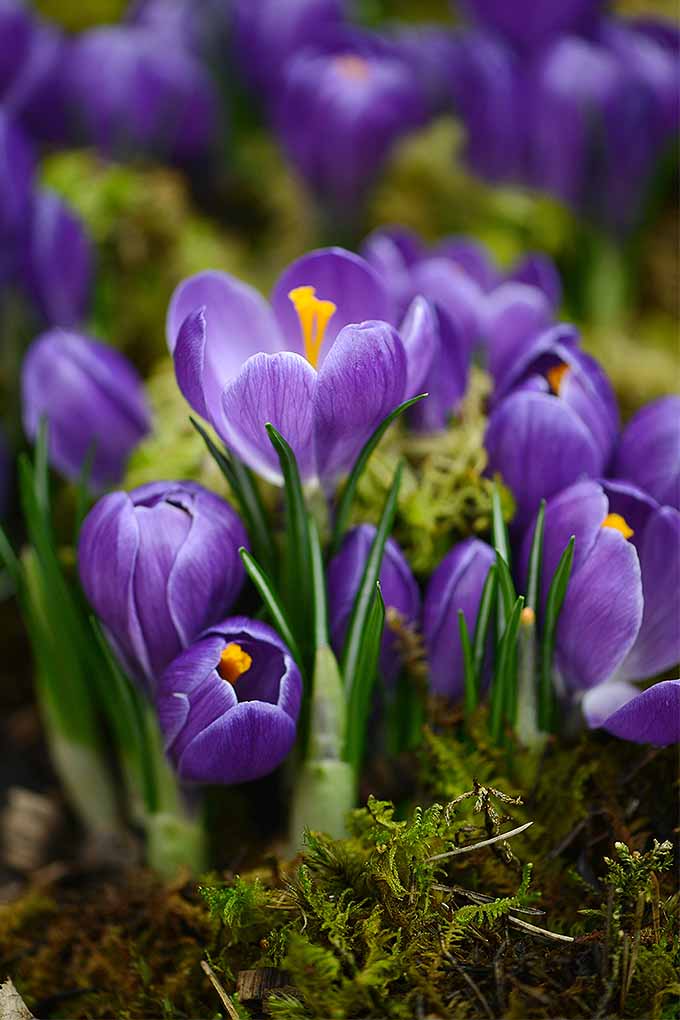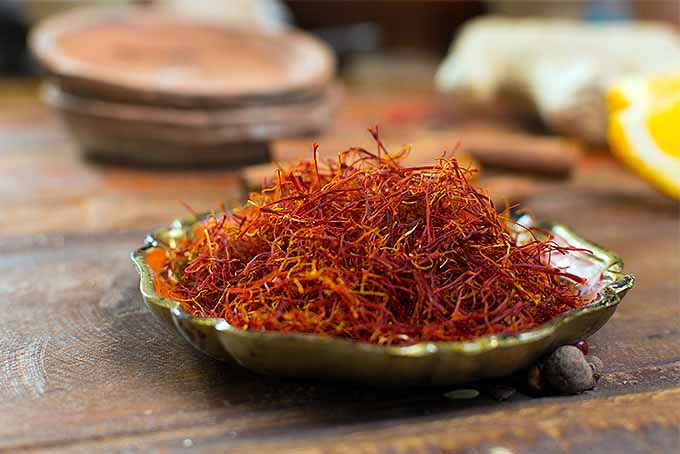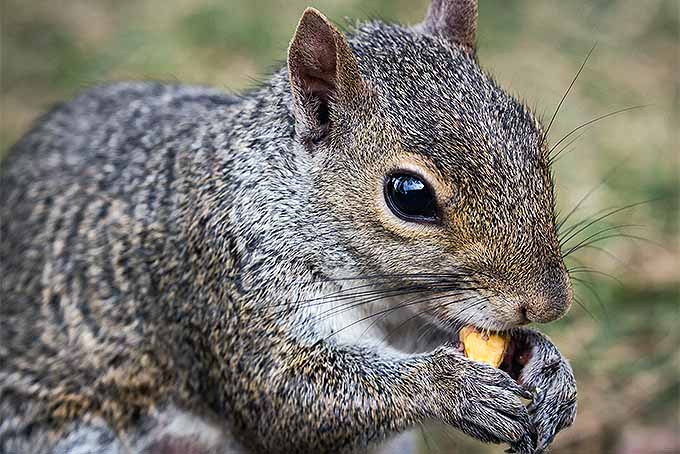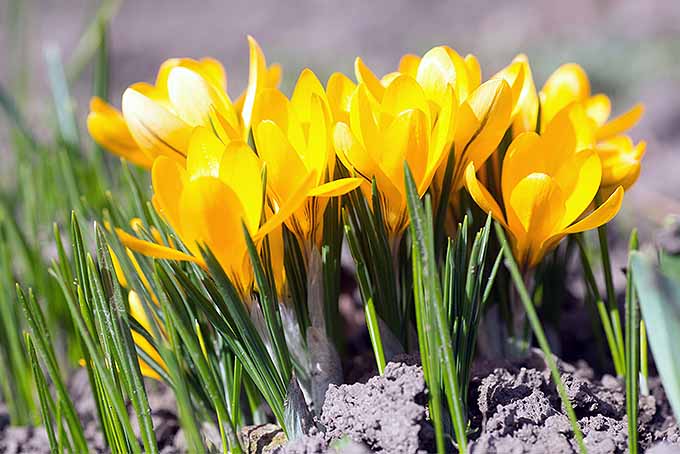Many gardeners look to the appearance of crocuses as the first sign that spring is but a nanosecond away. And what is more joyful to a horticulturist than springtime after a long, chilly season of leafless shrubs and bare trees? We link to vendors to help you find relevant products. If you buy from one of our links, we may earn a commission.
What Are Crocus Flowers?
Crocus is a genus of 90 closely related species of bulbous perennial herbaceous plants belonging to the iris family that grow from corms. Although they are known for flowering in the spring, select species bloom in the autumn or the winter. They are native to North Africa and the Middle East, the Eastern Mediterranean (in particularly the islands of the Aegean region) and stretching to Central Asia and western China.
Their native habitat is fairly diverse and includes meadows, scrubs and woodlands. Most species are quite petite and grow four to six inches tall. Saffron, a spice that is largely feature in Spanish cuisine, is manufactured from the stigmas of the autumn-blooming C. sativus species. This pricey and highly sought-after cooking ingredient traditionally used in risottos, pilafs, and paellas.
Read more about its use as an herb on our sister site, Foodal. And get Foodal’s delicious paella recipe that features this seasonal and much-coveted ingredient.
Cultivation and History
Crocus sativus was first grown for saffron in the eastern Mediterranean and first appears in the historical record with the Minoan civilization on the island of Crete. The Holy Roman Empire ambassador to Constantinople first introduced the plant to western Europe when he brought back corms to the Netherlands where they became popular for ornamental gardens. By the early 1600s, new fancy varieties had been developed which are strikingly similar to types that are still cultivated.
Propagation
Crocus flowers can be propagated by two different methods and both require digging up the root structure. The roots should be dug up and divided after the first frost in the autumn after the bulb-like corms have gone dormant. The primary method of propagation is digging to the roots and separating the corms into bulb offsets. These offsets are new buds that develop around the base of the of the mother corm. Once you have dug out the root structure, you can separate the offsets and use them to expand existing beds or create new ones. To minimize overcrowding, the plants should be dug and thinned at a minimum of every five years. Crocus plants are produce small seed bulbs, called bulbils, which develop along the root structure.
How to Grow
Plant corms in well-drained, compost-rich soil in full sun or part shade. Dig holes three to four inches deep, and place corms with the point facing up. Water well immediately after planting. In USDA Hardiness Zones 3-8, plant newly purchased spring-blooming crocuses six to eight weeks before the first hard frost is expected, and when soil temperature is below 60°F. Generally, this would mean September through October in the north, and October through November in the south. If you’ve dug your own, you can plant after the frost. Gardeners in warmer zones will want to “chill” corms at 35°F to 45°F for 12 to 14 weeks, so put them in the recesses of the fridge in October, and plant as soon as they come out of the chill. Fall-blooming crocuses are winter hardy in zones 6-10. Gardeners in colder climates can dig up the corms after the blooms are spent and replant the next fall. Plant fall-blooming corms in August — you’ll see blooms in 6 to 10 weeks. Find out more about specific planting times for various species here.
Growing Tips
For a gorgeous early spring display, many gardeners plant spring-blooming crocus in their lawns.
Simply lift a section of turf, and roll it back carefully. Loosen the soil and mix in a bit of compost, then plant the corms. Roll the turf back and tamp it down.
Some gardeners prefer a “scattered” look, with the corms planted randomly in little clumps, instead of in formal rows. Others like to express their creativity by planting a design, such as a smiley face. The crocus will emerge and bloom while the grass is still dormant. Take care not to mow until the plant’s leaves yellow and wither.
Lawn crocuses tend to self-seed liberally, resulting in a spectacular carpet of vivid color after a few years. For spring-blooming crocuses, water heavily when you plant them and then allow Mother Nature and winter precipitation do the work.
For fall-blooming crocuses, water heavily when you plant, and then water only if conditions are particularly arid. Crocuses don’t have any particular feeding requirements. Depending on soil conditions, you can sprinkle and water in a balanced granular fertilizer.
Cultivars to Select
Managing Pests and Disease
Crocus corms are apparently quite tasty to squirrels, mice, and voles. Keep these greedy rodents away by surrounding your planting space with a wire barrier, such as chicken wire, to prevent digging.
Harvest saffron mid-morning on a sunny day when the flowers are in full bloom. Pluck the stigmas with tweezers or your fingers. Gently place on a paper towel in a warm area to dry. Store in an airtight container in a cool, dark place.
asdfasdfas
40 Jumbo Crocus Mixture – C. Vernus and C. Flavus You’ll get 40 corms, or bulb-like stems, that are 3 to 3 1/2 inches across and produce yellow, purple, and white flowers.
‘Tri-Color’ Snow Crocus
For spectacular late-winter color, check out these tri-color snow crocus plants. ‘Tri-Color’ Snow Crocus, 20 Bulbs
Saffron Crocus
15 Saffron Crocus Bulbs – Fall Blooming, Grow Your Own Saffron! Brilliant purple flower petals are offset by the deep red stamens, which we harvest and call saffron. Incidentally, did you know it requires about 35,000 flowers to yield one pound of saffron?
C. Tommasinianus ‘Ruby Giant’
For lawn plantings (see below), the small, early-blooming C. tommasinianus or “tommies” are a popular choice. 20 Bulbs of C. Tommasinianus ‘Ruby Giant’
Or, do as one gardener that I spoke to does: Plant twice as many corms as you hope to grow, and let the critters have their fill. These lovely plants can also fall victim to bulb nematodes and root-knot nematodes. You’ll have to pull up and trash affected plants. To prevent an infestation, regularly add micronutrient-rich compost to your gardens. The good organisms in the compost will help to control the nematodes. You can learn more about root-knot nematodes in our guide.
Quick Reference Growing Guide
Anticipa-a-tion
If the thought of another long, punishing winter is almost too much to bear, plant a spring variety and you’ll have something cheerful to look forward to through all the dreary months. We also suggest trying your hand at forcing these springtime bulbs indoors, for an early burst of blossoms during the winter.
Or if your family can’t get enough paella and other flavorful and golden-hued dishes, plant fall-blooming saffron crocus and dazzle them with exotic flavors. Keep squirrels and their kin away with chicken wire, and you should be rewarded with brilliant color spring or fall.
And for more beautiful springtime blooms, check out some of our other flower growing guides such as:
How to Grow Hardy Snowdrops How to Grow and Care for Tulips How to Grow and Care for Grape Hyacinth

